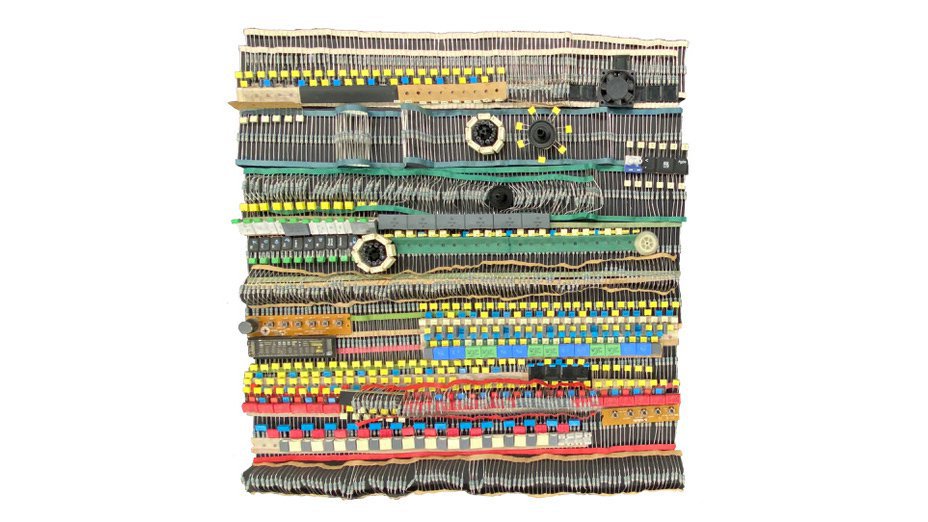
Key details
Date
- 1 October 2020
Author
- RCA
Read time
- 2 minutes
Shawn Adams, who graduated from MA Architecture earlier this year, has won the prestigious Architects' Journal (AJ) Post-Graduate Student Prize, 2020.
Key details
Date
- 1 October 2020
Author
- RCA
Read time
- 2 minutes
Adams was awarded the prize for his final RCA2020 project, Plinths and Tapestry. The project reconsiders the material value of electronic waste in Agbogbloshie, Accra, Ghana, and ultimately questions how we can look beyond conventions of value.
Agbogbloshie is a vast urban area in Ghana where e-waste is deposited. On this former wetland, electronic items connect people, their environment, and everyday practices.
Plinths and Tapestry proposed five spaces to the southeast of Agbogbloshie. Comprising fourteen plinths and three canopies made from electronic waste, these interventions challenge the stigmas attached to materials and create new places for the local community.
These plinths frame and elevate simple acts of daily life, respite and togetherness. The three canopies employ various retired components to form a series of electronic tapestries.

Plinths are not only a way to simply raise people off of the ground but are an architectural form that redefines how the ground is made inhabitable. This is a project where experiencing areas of raw uncontaminated earth, or the touch of your bare body on the intricacies and smoothness of cast electronic components becomes an enormous act of generosity and care.
Plinths and Tapestry employs a unique formal, spatial, and material language that draws, on the one hand, from its etymological roots in Ghanaian culture (e.g. Ashanti gold weights and umbrellas); and on the other hand, from the global and highly personal remnants of electronic waste.
It is a design investigation that places itself outside of the main canon of architecture. The role of the architect is as a listener and learner that advises on loose systems of construction which can be adapted by the residents. It is this process of engagement that allows for new values to be formed. Ultimately, at the project's heart sits the ambition to reinstall how materials are perceived and to provide spaces for new values to emerge.
Dr Adrian Lahoud, Dean of School of Architecture said: "This prestigious prize could not have gone to a more deserving project and student. It is less that the work reimagines values around waste, but more importantly, that Shawn recognises that this re-valuation already takes place in places like Agbogbloshie and that an entire set of rituals and social groupings emerge from this e-waste economy.
Moreover, this re-valuation is at the core of important social, political and cultural relationships that exist outside of architecture's traditional frameworks. It is a credit to Shawn's intelligence and curiosity that he was able to see this, understand its importance, and propose such a rich and empowering transformation of it. The result is nothing less than a decisive break with epistemological convention in architecture, one from which new kinds of values and practices might flow."
“This prestigious prize could not have gone to a more deserving project and student.”
Dean of the School of Architecture
The AJ judges describe Plinths and Tapestry as a 'visually appealing collage city', the final designs also featured on the cover of the AJ student special issue which came out in July.
Shawn Adams is a member of the New Architecture Writers and is the co-founder of Power out of Restriction (POoR), a collective that focuses on the development of communities through the elevation of young people.
In 2019, he was awarded the RIBA Wren Insurance Scholarship and the Stephen Lawrence Charitable Trust Bursary. As an Alumni of the Stephen Lawrence Charitable Trust, Shawn cares deeply about creating a voice for under-represented people and endeavours to become an architect who supports marginalised communities.